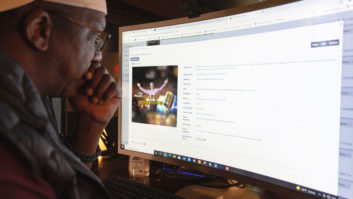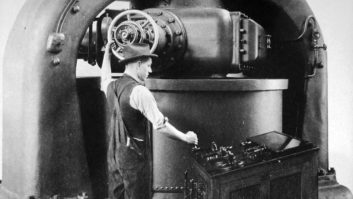Have you heard the term “amplify” used in conjunction with social media? With the death of organic reach on Facebook, this term has become the “go-to” euphemism for making an advertising buy to ensure a message is delivered to a significant audience size.

The idea is that when you “post” a message — whether it’s text, image, video or animation — the entity would invest in “amplifying” that message by paying Facebook or any other media company to reach hundreds, thousands or millions of people.
This should seem familiar. Since 1922, radio has been “amplifying” messaging, both organically and through advertising buys.
Are you educating your advertising staff about the latest language on the street and at the agencies? Do you know the social media ad units being sold and how this relates to radio? When you don’t, you run the risk of being out of touch and unprepared either to compete or to play in the field where the everyday advertiser is now spending their time, energy and money.
Our advertising staffs must speak the language of young media buyers and increasingly be able to show not only radio’s relevance, but radio’s ability to complement social ads to drive retail results.
SYNERGY
Initially, some of this synergy may occur because you notice new local canvas storytelling ads running on Facebook.
As an example, a local furniture dealer may run a canvas ad showing off new bedroom suites. Maybe your station could play a role in this story by having your nighttime DJ broadcast from — and then sleep in — that very bedroom suite being displayed via a canvas advertisement. If you got involved enough, maybe your DJ can actually be the one in the canvas ad, telling the story and selling the product. This makes sense because radio stations have something Facebook doesn’t have: local celebrities.
After you show how radio can be utilized to amplify pre-existing social media advertising, you can begin designing and suggesting these campaigns from scratch.
Another entry point for advertisers could have your station amplifying a client’s social media messaging organically — in other words, for free — as a “bonus.”
Let’s say one your account reps notices that a night club you do business with is running Facebook ads about an upcoming event, and you don’t have a buy for it. Don’t get mad about being left out of this plan. A kinder, more proactive approach would be to have one of your own talent mention that she saw the event on Facebook and plans on attending. Record the break and send it to the client with a note expressing how next time, you’d like to help amplify this message via radio along with their social media advertising.
Are you aware of “dark posting”? Google’s definition: “This is a status update, link share, video or post that was never meant to be shared as an organic post.” It happens when a client doesn’t want a post to show up in their own organic feed so the world can see it, but it does appear anyway in other users’ feeds — for a fee, of course. The only way to see these ads is to be active on Facebook.
You should be aware of this technique because you can’t always determine what a potential client is doing with social media advertising just by looking at their pages. You and your staff must be active online to get a real measure of what’s going on your market.
HERESY?
Before you accuse me of heresy in saying radio can be a terrific medium for amplifying social media, just remember that it wasn’t long ago that TV was perceived as a threat to radio’s livelihood.
At one station where I worked years ago, the owner actually called me while I was doing the morning show to yell at me for talking about a popular show on television. Boy, was he livid! I asked him why he was so mad, and he explained to me — in a tone that indicated that I was an idiot for not knowing — that local TV competes with local radio for advertising dollars.
I had a long meeting with him after the show to tell him that if I couldn’t talk about what’s on TV, I would have a tough time being relevant. He was a stubborn person, yet introspective enough to call me in the next day and tell me that, well yes, it was okay to talk about TV on radio because he figured the pie was big enough for all of us.
He then asked me if I could dream up a way we could work together in driving results for clients.












